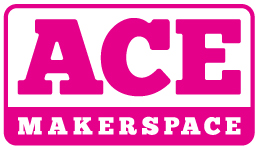If you’re looking for an overview, start with our 3D Printing FAQ.
ABS
Formerly the most common 3D printable plastic. Stands for ‘acrylonitrile butadiene styrene.’ Requires a heated bed; has warping challenges and stinks while printing. Lego is made of ABS. Degrades in sunlight.
Arduino
A prototyping board containing an ATMEL microcontroller, very popular in hobby electronics. Most 3D printer controllers are still based on the ATMEL/Arduino architecture. The newest Arduino board (the ‘Due’) uses an ARM microcontroller.
ARM
A CPU architecture that’s becoming an alternative to the mainstream Arduino-based controllers.
Bed leveling
A recently developed feature that eliminates the tedious task of leveling the print bed. Slightly misnamed, it doesn’t actually ‘level’ the bed, but rather it probes the print bed to determine its height, then automatically compensates for any slight leveling errors. AMT120 Prusa I3 MK2 3D printer supports this feature
Cartesian geometry
A mechanical configuration that moves the printhead in rectangular X,Y,Z directions. Far and away, the most common mechanical layout for 3D printers.
Controller board
The brains of a 3D printer. Interprets g-code and drives the stepper motors, hot end, heat bed, and temperature sensors that make the 3D printer go.
Delta geometry
A triangular mechanical configuration for manipulating the 3D print head. Promises greater speed than Cartesian, but requires additional computation in the controller.
Duet
A newer controller based on the Arduino Due, using an ARM processor. ARM controllers promise faster processing (allowing more complex operations and geometric configurations).
Extruder
The part of the printer that actually squirts or ‘extrudes’ a fine stream of molten plastic. Usually includes a stepper motor (sometimes geared down), a pinch roller of some sort. Often the hot-end is considered part of the extruder.
FDM
‘Fused Deposition Modeling’. The type of technology used by low-cost 3D printers, including all those at AMT. Also called FFF
FFF
‘Fused Filament Fabrication’ — an alternative term meaning the same thing as FDM. Introduced to avoid copyright issues with FDM.
Filament
The raw material used in a FDM printer. Generally, it’s a long thin semi-rigid rod of plastic shipped on a spool.
Firmware
The computer program that lives inside and is run by the print controller. Since this is not typically altered once the printer is set up, it’s considered somewhere between ‘hardware’ and ‘software’… ‘firware.’ ‘Marlin’ is still the most popular firmware for 3D printers, but ARM solutions are gaining ground.
Heat bed
An electrically heated print surface that allows a part to cool gradually, preventing warps. The bed doesn’t get terribly hot; usually no more than 100°C or so. aka ”heated bed”.
Hot end
The business end of the 3D printer that actually melts the plastic. Sometimes this is considered part of the ‘extruder’. It gets hot enough to burn your fingers but not enough to warm the room. We typically run it at around 210°C (about 410°F).
Nylon
Much stronger than PLA, but reportedly has warping issues similar to ABS. Prints at high temperature. Same stuff the fabric is made of.
PLA
The kind of plastic we recommend for your first prints. Stands for ‘polylactic acid’ or ‘polylactide’ (depending on your source). It’s biodegradable, renewable, easy to print and results in rigid, durable parts. Degrades in sunlight.
PET
Prints at a higher temperature than PLA and may be slightly stronger and more flexible. Can be printed on an unheated bed. Turn the fan off to avoid warping. Stands for ‘Polyethylene terephthalate.’ When made into thin fibers it’s called ‘Dacron.’
Pololu
Pololu is a hobby electronics company producing a postage-stamp sized stepper motor controller which is frequently used in 3D printer controllers. Often the stepper controller itself is called a ‘Pololu.’
RAMBO
A high-quality controller board, integrating RAMPS functionality in a single-board package. Our Prusa I3 Mk2 features a ‘Mini Rambo’ controller.
RAMPS
The most popular controller board for 3D printers. Stands for ‘Reprap Arduino Mega Pololu Shield’. It mates an ‘Arudino Mega’ board with 4 or more ‘Pololu’ stepper controllers, and adds a few extras for controlling the hot end, heated bed, and temperature sensors. Economy of scale has made this controller ridiculously cheap of late (less than $20 for a complete package in 2016). Our Type-A machines Series 1 features a RAMPS controller.
Stepper motor
A digitally controllable electric motor. The controller board ‘pulses’ a stepper, making it turn by a precise, fixed angle depending on the stepper. Most 3D printers use sophisticated controllers that implement ‘microstepping’ which multiplies the resolution of the stepper and makes it smoother and quieter.
Support material
Temporary structure added to enable printing parts that otherwise would include impossible overhangs. Advanced printers use special ‘soluble’ material that can be dissolved or washed away after printing.
STL
The most common file format used as input to 3D printing software. Stands for ‘Stereo Lithography’. This file format predates modern 3D printing, and not all STL files are 3D printable. Some files must be cleaned up first; some are beyond hope (see ‘manifest’ in the 3D Printing FAQ).
